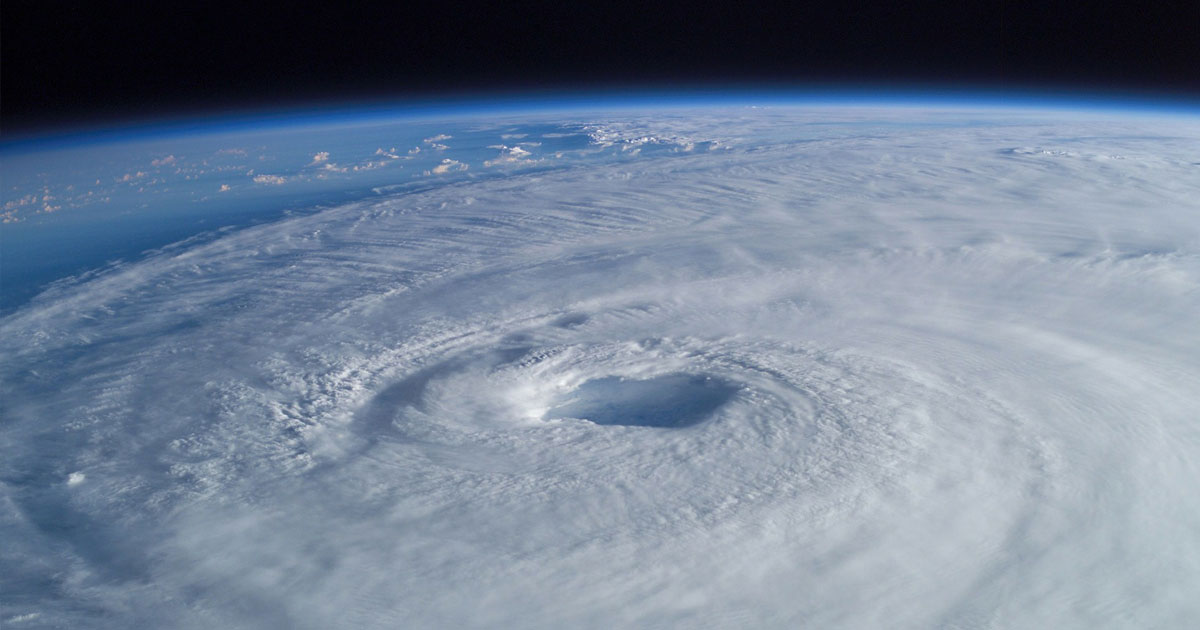Harvey vs. Irma vs. Katrina: Can Displaced Patients Get the Care They Need?

"There is such an unmet medical need," says Kristin Malaer, another social worker who also showed up to volunteer. "Just going and connecting with people, you find out so many of them are diabetic or so many of them have chronic medical illness, that serving them all is pretty overwhelming." --NPR report on Harvey evacuees, August 29, 2017
Twelve years ago last month, Hurricane Katrina slammed into New Orleans, just 350 miles east of Houston, Texas, which right now is reeling from Hurricane Harvey’s deluge. On the other side of the Gulf of Mexico, Hurricane Irma breached sea walls, spiraled off tornadoes, and left millions without power for an unknown amount of time. Recent newscasts at times looked like Katrina reruns: truck drivers being pulled from the muddy water that was the highway, families yelling for help from second story windows, boats paddling down streets. And, just as in Katrina, tens of thousands have been displaced for an unknown and likely lengthy time from their submerged neighborhoods. In Florida, Puerto Rico, and Texas, agricultural workers, already deemed by health centers a “vulnerable” population, showed their vulnerability after recent storms. Many agricultural workers’ substandard housing, mobile homes, and trailers -- a product of their mobility and low wages, which leave them few other housing options -- blew away during Irma, leaving many homeless. Those that managed to escape the storms will have to return to an uncertain future. As clinicians serving mobile patients, we watch the flow of displaced residents -- and we worry.
“Even in the best of times, vulnerable populations struggle to get services for their health concerns that require continuous, dependable sources of medical care,” said Laszlo Madaras, MD, MPH, Co-Chief Medical Officer for Migrant Clinicians Network. Many of the displaced suffer from ongoing health issues or chronic diseases that need attention and access to medicines -- and local authorities and health providers have struggled to keep up. Immigrants are at a severe disadvantage when disaster strikes, as language differences, fear over immigration status, lack of transportation, fewer resources, and other significant barriers keep them from getting the care they need.
Dr. Madaras lists conditions that can easily become life-threatening when care is cut off: “Consider the patient who needs blood pressure medication -- interruption can lead to stroke and other types of vascular disease compromise. The suboxone and methadone clinics need a constant supply of medication and cleared access roads to prevent serious drug withdrawal by its patients. A continuous supply of diabetic medications such as insulin which must survive a cold chain to remain potent, requires electricity. Even a few days going without can result in deadly consequences.” Will patients undergoing treatment for tuberculosis have their treatment interrupted if roads aren’t accessible? How will a person suffering from hypertension get the correct replacement medicines and doses without medical records? What if medicines aren’t available? How will changes in diet, including potentially longer periods of time without food, affect the glucose of patients with diabetes? How are evacuees’ mental health needs addressed in response to the trauma? What if a person needs help but an interpreter isn’t available? What public health concerns need to be addressed in evacuation sites that may have more people for a longer period of time than was designed?
For those who manage to get out of the disaster area, unaffected surrounding regions may not be prepared for an influx. “Dialysis for end-stage kidney disease patients is needed almost every 48 hours, which requires electricity and a dependable supply of dialysis fluids and instruments. Some areas of the country are already very heavily utilized for such services,” Dr. Madaras noted. “When crisis comes, an influx of climate refugees might not be able to be accommodated.”

Disaster preparedness operations are largely designed for the types of disasters that we expect, like hurricanes, earthquakes, or tornadoes. But when the disaster’s magnitude is far beyond a generation’s memory -- officials are calling Harvey an “800-year storm,” Irma as it ripped through the Caribbean was the strongest Atlantic hurricane on record -- and evacuations are as large-scale as in New Orleans in 2005 and in Houston and Florida this month, emergency preparation may never be enough. As climate change and rapid urban and suburban development continue, and the health needs of Americans get more complicated with epidemics of obesity and diabetes, these types of disasters will become more common and the response of health care providers will need to be more advanced. Additionally, natural disasters typically hit poorer neighborhoods the hardest, which tend to be the more ethnically diverse areas as well. Post-disaster care needs to take into account the cultural and linguistic differences and potentially heightened needs of the survivors.
Within a few weeks after Katrina, diabetes advocates were initiating care for thousands of evacuees, and public health authorities began locating displaced TB patients. Mobilization was quick and, largely, effective, considering the magnitude of the disruption. Similarly in Houston, as our conversation with HOPE Clinic demonstrated, many health centers’ careful planning and execution has resulted in positive health outcomes for many Houstonians, although just like in other storms, the impact was uneven, leaving poorer residents harder hit.
But even if health centers are prepared for disaster, their patients are not. A 2014 Loyola University Medical Center study found that 60 percent of surveyed kidney dialysis patients thought they were prepared for a disruption -- but in fact only 20 percent were. The research team provided one-on-one education to the participants. After this training, 78 percent were deemed to be prepared, according to a follow-up survey, demonstrating that preparation is possible with time and resources. Even with preparation, patients needing dialysis may encounter barriers during time of disruption that they cannot overcome.
Immigrants may be even less prepared. APHA notes that “racial and ethnic minorities, including immigrants, are less likely to have had disaster educational opportunities and to be involved in hazard preparedness, such as stockpiling emergency supplies and/or purchasing insurance.”
“In the current climate, even well established and well insured American citizens are very vulnerable to loss of medical services,” Dr. Madaras said. “This is multiplied several times over in the populations of the mobile poor who may be political refugees as well as climate refugees.”
Today, hundreds of people woke up in cots in emergency shelters, their lives muddied up and the communities they rely on -- neighbors, health providers, grocery stores -- swept away. But they still have immediate health needs. Here are some resources so that we can respond better today than we did to Katrina a dozen years ago, even under the toughest circumstances.
- Health Network, MCN’s bridge case management for mobile patients, assists patients on the move. Health Network is already assisting evacuees arriving in Austin via Ventanilla de Salud. Clinicians can enroll patients and learn more about our Health Network page.
- HRSA’s Emergency Preparedness site.
- SAMSHA’s disaster response site includes webinars on providing “culturally aware disaster behavioral health services.”
Health centers may be able to respond more quickly to disasters utilizing HRSA’s emergency disaster protocol which include the following, courtesy of a recent Bureau of Primary Health Care Bulletin:
- Health centers may request a change in scope of project to add a temporary site(s) in response to emergency events through a streamlined process outlined in Program Assistance Letter (PAL 2014-05): Updated Process for Requesting a Change in Scope to Add Temporary Sites in Response to Emergency Events
- Following a Public Health Emergency Declaration by the HHS Secretary, HRSA allows eligible entities in affected states to immediately enroll for the 340B Drug Program. To enroll, contact the 340B Prime Vendor Program: apexusanswers@340bpvp.com or 1-888-340-2787.
- The Federal Tort Claims Act Health Center Policy Manual provides additional guidance related to emergencies in Section F: FTCA Coverage When Responding to Emergency Events
This table, from the American Diabetes Association, advises patients on how to prepare for large-scale disaster, published after Katrina.
Preparations for a disaster for people with diabetes
- Good diabetes education emphasizing self-management skills and stress management.
- Be up-to-date with all immunization including tetanus.
- Keep a waterproof and insulated disaster kit including the following items*
A. A list of items to pack during an evacuation.
- Glucose testing strips, lancets, and a glucose testing meter
- Medications including insulin, etc.
- Syringes
- Glucose tabs or gels
- Antibiotic ointments/creams for external use
- Glucagon emergency kits
B. A list of contacts for national organizations such as the ADA through their help lines or the Internet.
C. Photocopies of relevant medical information with you, particularly recent lab tests/procedures, if available.
D. Up-to-date information on all oral medications and insulin as regards formulation and dosing. If possible, have the prescription number available. Many chain pharmacies throughout the country may be able to refill based on the prescription number alone.
4. Evacuate early if possible, taking the above with you.
- ↵* Disaster kits should be reviewed and replenished at least twice yearly.
Here’s how the CDC assures TB treatment continuation “in response to the lessons learned from Hurricane Katrina:”
- Preparing line lists of patients in parishes and counties that might be affected;
- Giving patients a 2-to-4 week supply of medication in case DOT was interrupted;
- Ensuring that patients had a list of phone numbers to reestablish contact with the health department if they were displaced;
- Obtaining contact information for patients' relatives and friends in other parts of the country;
- Ensuring that back-up copies of patient records were available for potential sharing with new jurisdictions; and,
- Moving essential TB supplies and medication stock to safer inland areas.
Like what you see? Amplify our collective voice with a contribution.
Got some good news to share? Send it to us via email, on Facebook, or on Twitter.
Return to the main blog page or sign up for blog updates here.
- Log in to post comments
